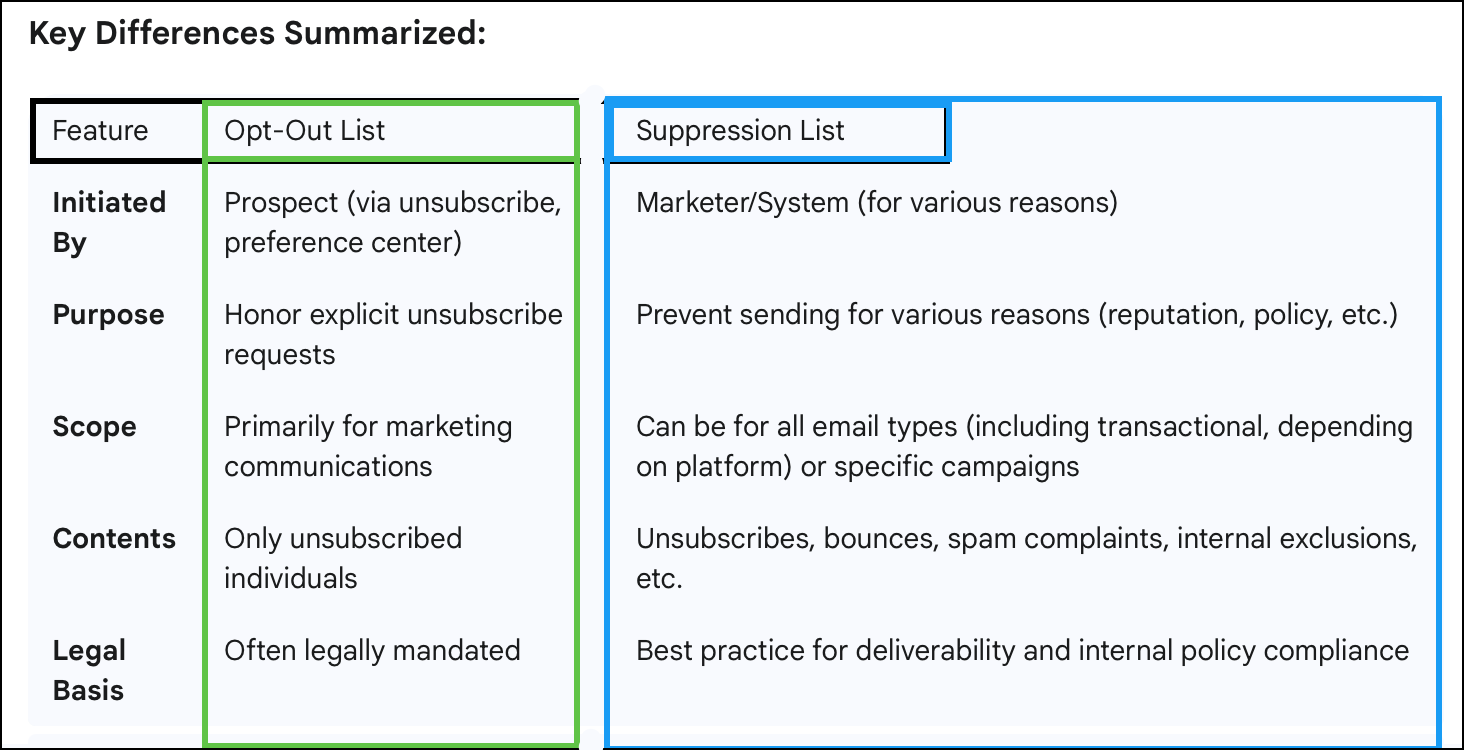Your Guide to Cleaner Email Lists: Suppression vs. Opt-Outs Demystified
As an executive leading a small to mid-size organization or association, you're juggling a lot. Technology should simplify, not complicate. That's why understanding seemingly small distinctions, like the one between an email suppression list and an opt-out list, can have a significant impact on your marketing effectiveness, deliverability, and even your bottom line.
While an opt-out list is indeed a type of suppression, they're not interchangeable. Let's demystify these two crucial components of healthy email communication:
1. Opt-Out List (or Unsubscribe List):
Definition: This is a list of individuals who have explicitly chosen to stop receiving your marketing communications. This typically happens when they click an "unsubscribe" link in an email, update their preferences in a preference center, or directly request to be opted out.
Why it Matters to You (The Executive): Honoring these requests promptly isn't just good practice; it's a legal requirement in many regions (e.g., CAN-SPAM in the US, GDPR in Europe). Failing to do so can lead to fines, damaged reputation, and lower deliverability across all your email efforts.
Platform/Application Context: In most marketing automation platforms (like Pardot, HubSpot, or Salesforce Marketing Cloud Account Engagement), this is typically tracked via a designated "Email Opt Out" field on a prospect's record. When someone unsubscribes, this field is automatically marked.
2. Suppression List:
Definition: A suppression list is a broader, proactive "do not send" list of email addresses you deliberately exclude from specific, or all, marketing campaigns. This exclusion happens regardless of their opt-in status. It's a strategic move to protect your sender reputation and ensure email efficiency.
Key Reasons for Suppression (Beyond Opt-Outs):
Hard Bounces: If an email address is invalid or non-existent, it "hard bounces." Continuously sending to hard bounces severely damages your sender reputation, leading to more emails landing in spam folders or being blocked entirely. These addresses are automatically or manually added to a suppression list.
Spam Complaints: When a recipient marks your email as spam, that address must be suppressed to prevent further negative signals to email providers.
Internal Directives/Policies: You might proactively add competitors, internal team members, test accounts, or specific individuals (e.g., a customer with a recent complaint where you want to pause marketing) to a suppression list.
Frequency Control: Dynamic suppression lists can prevent "email fatigue" by ensuring prospects don't receive too many emails within a set timeframe (e.g., "suppress anyone who received 3+ emails this week").
Customer Status: To ensure relevant messaging, you might suppress current customers from receiving "prospecting" or "new lead nurture" emails if you have separate communication tracks for existing clients.
Advanced Regulatory Compliance: Beyond general opt-outs, a suppression list can help manage specific data deletion requests where a data subject's information must be retained for compliance purposes, but actively suppressed from direct marketing.
Platform Context:
Most marketing platforms feature a "Do Not Email" field (or similar) on a prospect record that acts as a global suppression. If this is marked, the prospect generally won't receive any emails, including autoresponders or operational communications in some systems. This is often automatically triggered by events like hard bounces.
You also have the flexibility to create specific suppression lists (static or dynamic) that you apply to individual email sends or entire automation programs. For example, when launching a new product, you might suppress a list of "Current Beta Testers" to avoid sending them information they already have.
Why This Matters for Your Organization:
Understanding and actively managing both your opt-out and suppression lists is not just a technical detail; it's a strategic imperative. It directly impacts your email deliverability, safeguards your sender reputation, ensures regulatory compliance, and ultimately drives more efficient and effective marketing. By keeping your lists clean and segmented, you're not just sending emails; you're building stronger relationships and driving real business outcomes.
Key Differences between Opt-Out and Suppression Lists
